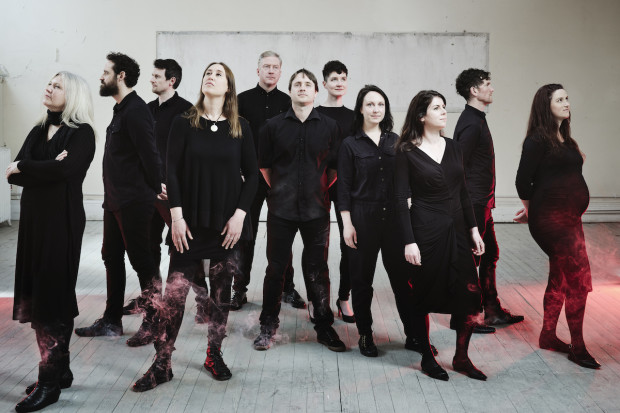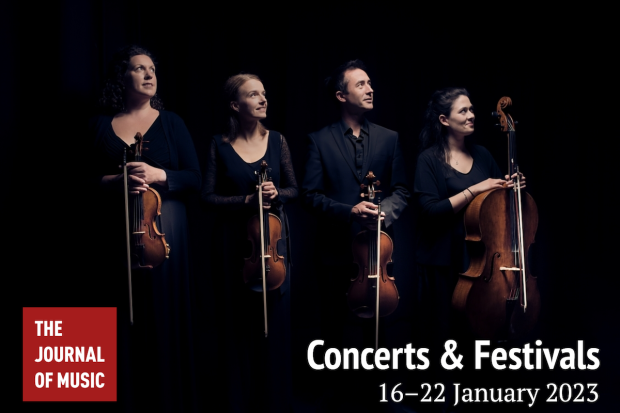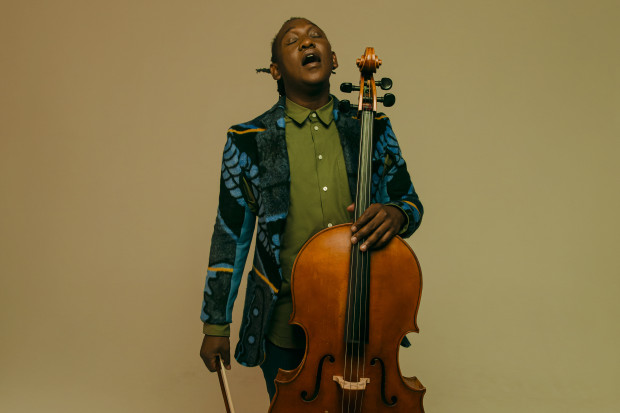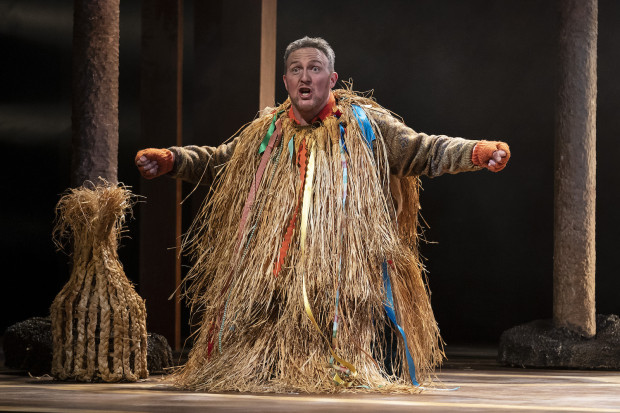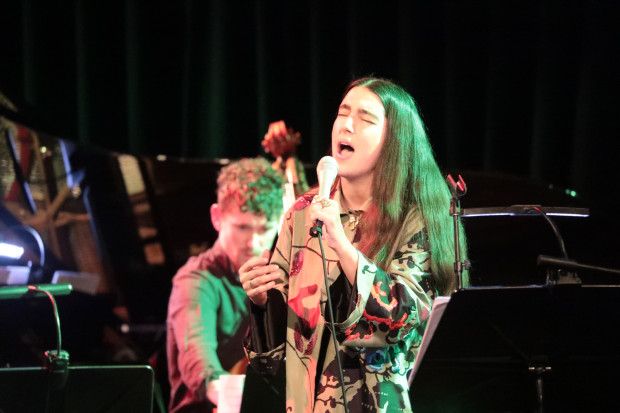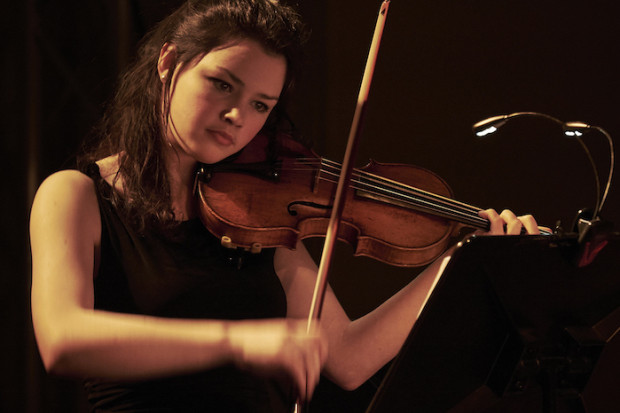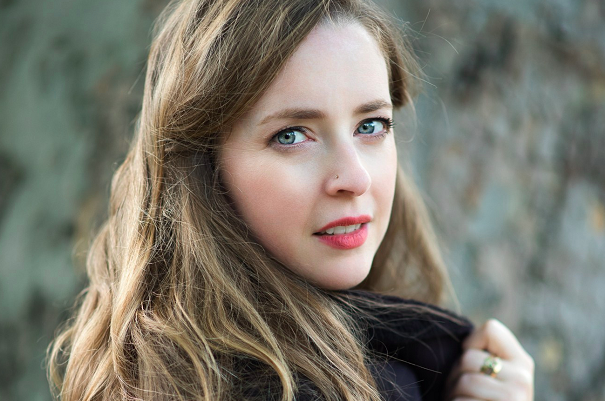
Soprano Daire Halpin who performed at the first concert of the Irish Language Art Song Project.
A New Time for the Irish Language and Classical Music
In 2018, the musician and academic Dáirine Ní Mheadhra, the Irish expatriate founder of the Queen of Puddings Music Theatre opera company in Canada, won funding from the Arts Council to commission new music from several Irish and international composers. Her goal was to create a robust foundational repertoire of Irish-language art song, and the result, fifty songs in 17 short cycles, is receiving a full public outing across three performances in the National Concert Hall, the first two of which took place this week with the third scheduled for the 12th of March. I attended the first concert, in the Kevin Barry Room on Saturday.
The pianist for the concert was the Canadian John Hess, with sopranos Anna Devin and Daire Halpin and tenor Andrew Gavin alternating from cycle to cycle. There were six cycles in total, each consisting of three songs; Gavin performed those by Oscar Strasnoy, Garrett Sholdice, and Ana Sokolović; Devin those by Kevin O’Connell and Jonathan Nangle; with Halpin singing Ashkan Behzadi.
Ultimately it was almost a given that a concert like this would lack flow; the six song cycles were chosen for their connections between performers more than for textual or stylistic links. That flaw in the concert programme is a strength in the project: by commissioning composers for an array of styles, schools, and even nationalities, the organisers have sown as diverse a crop as possible, allowing performers of all stripes to incorporate the cycles into their repertoires.
Modal melody
Garrett Sholdice’s Trí Véarsa as ‘Dónall Óg’, from an anonymously written seventeenth-century text, was the most affecting cycle of the night, capturing a bleak hopelessness to match the words (‘bhain tú an ghealach is bhain tú an ghrian dhíom, ach is rímhór m’fhaitíos gur bhain tú Dia dhíom.’ (‘You’ve taken the moon from me, you’ve taken the Sun from me. And great is my fear you’ve taken God from me.’)). It’s Sholdice, so of course great care was taken with the linking of the three songs, so that they felt like three facets of a single idea, each leading naturally to the next. Of the six cycles, it also felt the most closely linked with traditional music, with its (mostly) narrow vocal range and modal melody.
Jonathan Nangle’s cycle, Snáth (‘Yarn’), which set three twentieth-century poets – Colm Breathnach, Nuala Ní Chonchúir, and Michael Davitt – rivalled Sholdice’s in emotional openness, though its mood was more tranquil and at ease. The opening of the second song, also called ‘Snáth’, created a beautiful link between words and music, with a wandering, lost piano ostinato over the words, ‘Is mise / d’Ariadne’ (‘Let me be / Your Ariadne’), which is led by the end, gently, tenderly, to a place of calm.
Oscar Strasnoy’s piano-focused Trí Amhrán Ghaelacha, for which he chose poems from across Irish history – from the mythological bard Amergin Glúingel, the living poet Micheál Ó Cuaig, and the eighteenth-century scribe Pear Ó Doirnín – was also effective. Strasnoy has a knack for writing two very different piano textures which alternate and superimpose, almost creating the effect of a piano broken in half. In these songs, the voice acted as a kind of spiderweb, linking, weaving, knitting, and, eventually bridging the piano material.
The character of encores
It’s hard – and ill-advised – to estimate the staying power of any of these works, although it may be that Ana Sokolović’s Trí Amhrán has the most utility. These short, playful songs placed Irish words (two anonymous, one by Máirtín Ó Direáin) over jaunty Balkan rhythms and harmonies, with Hess beating time under the keyboard and sliding his fingernails along the keys like a washboard almost as much as playing them. This set was rightly placed at the end of the performance; more than anything, they had the character of encores.
Iranian–Canadian composer Ashkan Behzadi’s cycle, Trí Amhrán ar Dhánta le Michael Hartnett, alone amongst the six cycles was sung by Daire Halpin, and alone made considerable use of extended vocal and piano techniques – whispers; shrieks; bare, stark textures; piano strings plucked. It’s difficult to say why I found this work so frustrating; not its confrontational modernism alone, but perhaps the means by which its techniques were deployed, which felt neither directed nor exploratory.
Kevin O’Connell’s cycle, Sin Mo Scéal, also hewed modernist, although much more successfully than Behzadi’s, with a clear sense of structure and musical through-line. O’Connell’s settings of early medieval texts made much of small gestures – repeated notes at the beginning and end, and the opening word (and title) of the second song, ‘Íosagán’ (translated in the text as both ‘Isucan’ and ‘Little Jesus’) sounding like an unanswered question. The third song of the group, ‘Scéal liom díobh’, was compelling, a light, dancing perpetuum mobile under Devin’s floating voice.
Full credit is due to all the performers for the evening’s concert, but the clearest technical acrobatics came in these two cycles. In the latter, Devin seemed to be able to pull pitches out of thin air.
The true test
This concert is the first formal outing for these works, but not the ideal one; the true test will come in which ones receive subsequent performances. It is also, despite the high quality of the performances on Saturday, in subsequent performances that these works will really shine, where programmes can be built around a single work rather than around the concept of an Irish-language song cycle.
But that is not to discredit the embarrassment of riches which Ní Mheadhra has created with this project. The Contemporary Music Centre now has a dedicated webpage with recordings of all of the songs from the project, along with recordings of the poems read aloud, translations into English, phonetic transliterations, and full scores, all available under Creative Commons licence. Whether any of these song cycles or their descendants will enter the common performance repertoire only time will tell, but it cannot be said that they’ve had anything other than the best possible shot.
The next concert in the series takes place on 12 March. See www.nch.ie. For further details on the Irish Language Art Song project, and to listen to all songs, visit www.cmc.ie/AmhrainEalaineGhaeilge.
Published on 20 February 2020
Brendan Finan is a teacher and writer. Visit www.brendanfinan.net.












